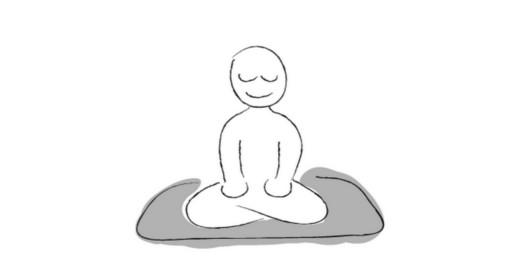
Who are you without the things that have happened to you? Our experiences (good and bad) shape us so much that it’s hard to even imagine life without our baggage.
By Daniel Scharpenburg
One key idea is implicit in this slogan.
We aren’t just practicing when we’re on the cushion—we’re practicing all the time. Our practice isn’t about going to a temple or going on a retreat for a while and then returning as though nothing has happened. Our goal, if there is one, is to be shaped by our practice, to bring the lessons and insights we learn on the cushion into our day-to-day life.
If we aren’t doing that, then what’s the point?
The phrase “child of illusion” seems a little weird at first. It has a few different connotations. The illusion refers to cultivating our understanding that our thoughts, emotions, and baggage are illusionary, that there’s nothing to hold on to. The child part refers to cultivating a sense of innocence and wonder. It makes me think of that cliché: “Who were you before the world told you who to be?”
Who are you without the things that have happened to you? Our experiences (good and bad) shape us so much that it’s hard to even imagine life without our baggage.
How do we cultivate a sense of wonder?
Like many things, it comes from paying attention. Stop what you’re doing and look out a window and really pay attention to what you see. I see the Kansas City skyline against a grey and cloudy sky right now. Whether you’re seeing 10,000 blades of grass or the vast expanse of the sky, there’s something out there that you can look at to experience wonder. When I look at the sky I just see infinity.
Ikkyu said, “Listen to the love letters sent by the wind and the rain, the snow and the moon.”
I think he was talking about cultivating a sense of wonder. Wonder helps us on the path, maybe it helps us a little in making things special instead of monotonous and repetitive.
It can be easier to have a sense of wonder when we’re traveling. I felt an incredible sense of wonder when I went to the Rocky Mountains, when I saw the earth reaching up to touch the sky. I didn’t see mountains until I was over 30 and there’s still a feeling I get when I look to the west.
But we can have feelings of wonder in familiar places too, I think. Explore wherever you live and look at what’s interesting. In the last few years I’ve really fallen in love with my city, just because I learned how to really pay attention to it.
And if nothing else, the sky will follow you everywhere. So just take a few minutes and look up.
Photo: (source)
Editor: Dana Gornall
Did you like this post? You might also like:
Comments
- Review of The Power of Mind: A Tibetan Monk’s Guide to Finding Freedom in Every Challenge {Book Review} - August 23, 2022
- The Path to Peace: A Buddhist Guide to Cultivating Loving Kindness by Ayya Khema {Book Review} - July 21, 2022
- That is Not Your Mind! Zen Reflections on the Surangama Sutra {Book Review} - July 16, 2022




